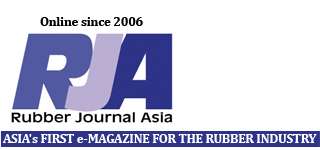 ALREADY a leading supplier of EPDM, German speciality chemicals firm Lanxess is investing EUR235 million to construct the world’s largest plant for EPDM in Changzhou. The 160,000-tonne/year plant is to meet global demand for EPDM that is growing 4% a year and 8% in China.
ALREADY a leading supplier of EPDM, German speciality chemicals firm Lanxess is investing EUR235 million to construct the world’s largest plant for EPDM in Changzhou. The 160,000-tonne/year plant is to meet global demand for EPDM that is growing 4% a year and 8% in China.
This is the largest investment the company has made in China to date. To start-up by 2015, the facility will create up to 200 new jobs. This year, the company is targeting sales of EUR1 billion from China, including Hong Kong, Taiwan and Macao.
Lanxess became the world’s leading supplier of EPDM following the acquisition and integration of DSM Elastomers in 2011. It markets its products under the brand name Keltan.
Global demand for EPDM is driven above all by automotive and construction industries. China will also continue to be the largest net importer of EPDM in the coming years.
At the recent ground breaking ceremony in China, Lanxess CEO Axel Heitmann said the EPDM plant is the company’s third major rubber investment in Asia.
The first is a world-scale butyl rubber plant on Singapore’s Jurong Island that will start up in the first quarter of 2013. The second is a neighbouring neodymium-based performance butadiene rubber plant that will be launched this month.
Located at the Changzhou Yangtze Riverside Industrial Park, the new EPDM plant will be supplied the key raw materials ethylene and propylene from a methanol-to-olefins (MTO) plant currently under construction at the site. The MTO process is a new way to produce these key raw materials, which are conventionally produced from refineries.
Lanxess is already active at the Changzhou site, with the construction of a 50,000-tonne/year leather chemicals plant. The EUR30 million facility is planned to come on stream by the first half of 2013.
At the EPDM facility, the firm says it will use Keltan ACE technology to enable sustainable production at its new plant. In comparison to conventional technology, the Keltan ACE catalyst technology reduces energy requirements for production and it does not require catalyst extraction as a result of high catalyst efficiency.
Furthermore, the process enables the manufacture of new EPDM rubber grades, such as oil-extended EPDM and special high molecular weight EPDM. The new plant will produce in total ten premium grades of EPDM tailored to Chinese customer needs.
The firm operates other EPDM production sites in the Netherlands, Germany, US and Brazil, with a combined capacity of 320,000 tonnes/year. It is also planning to convert 50% of its total production capacity in the Netherlands to Keltan ACE technology in 2013.
EPDM is used above all in the automotive industry as door sealants or windscreen wipers. Lanxess says that approximately 7 kg of EPDM is used in every car. The product is also used in the plastics modification, cable and wire, construction and oil additives industries.
Since the end of last year, Lanxess has been commercially producing EPDM from bio-based ethylene and marketing it under the brand Keltan Eco. The ethylene supplied by Braskem is produced by dehydrating ethanol from sugar cane. (PRA)
